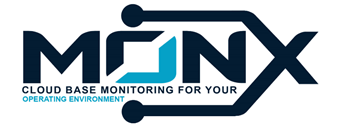Outline






INTRODUCTION
MONXPERT (Monitor for Operating Networks) is a platform that is designed to monitor IT Infrastructure, Lab, Manufacturing Devices, and Instruments. MONX allows to set and initiate alerts based on predefined condition changes such as uptime, process run, temperature, or pressure changes. Also, MONX is a platform that allows to collect, store logs, and track changes. The main benefit of MONX console is designed to work with devices on the sockets, ICMP or SNMP level.
ADMIN CONSOLE
MONX is a web-based monitoring console that provides the ability for the client to access administration console from any part of the world.
- Add/remove devices based on the sockets, ICMP or SNMP.
- Define System Owners for the Alert Delivery.
- Enter/Set Alert Initiation Triggers.
- Define Alert delivery to email or mobile devices via SMS.
- Track Loggable Alerts with acknowledgment from the system owners.
- Define Device location based on the Internal Environment.
- Process Report export in a txt, pdf, and xlsx formats.
ICMP MONITORING
ICMP (Internet Control Message Protocol) is an error-reporting protocol network devices like routers use to generate error messages to the source IP address when network problems prevent delivery of IP packets. ICMP creates and sends messages to the source IP address indicating that a gateway to the Internet that a router, service or host cannot be reached for packet delivery. Any IP network device has the capability to send, receive or process ICMP messages.
SNMP MONITORING
Simple Network Management Protocol (SNMP) is an Internet Standard protocol for collecting and organizing information about managed devices on IP networks and for modifying that information to change device behavior. Devices that typically support SNMP include cable modems, routers, switches, servers, workstations, printers, and more.
SNMP is widely used in network management for network monitoring. SNMP exposes management data in the form of variables on the managed systems organized in a management information base (MIB) which describe the system status and configuration. These variables can then be remotely queried (and, in some circumstances, manipulated) by managing applications.
SNMP is widely used in network management for network monitoring. SNMP exposes management data in the form of variables on the managed systems organized in a management information base (MIB) which describe the system status and configuration. These variables can then be remotely queried (and, in some circumstances, manipulated) by managing applications.
SOCKET MONITORING
A socket represents a single connection between two network applications. These two applications nominally run on different computers, but sockets can also be used for inter process communication on a single computer. Applications can create multiple sockets for communicating with each other. Sockets are bidirectional, meaning that either side of the connection is capable of both sending and receiving data. Therefore a socket can be created theoretically at any level of the OSI model from 2 upwards. Programmers often use sockets in network programming, albeit indirectly. Programming libraries like Winsock hide many of the low-level details of socket programming.
ALERT
MONX is the monitoring platform designed to set Alert Initiation Triggers, Device Owners, and Methods of Alert Delivery. Every Alert initiated by the MONX Platform is created with the trackable and acknowledgeable features that could be logged by Platform and exported by the Solution Admin. Also, solution admin can set specific time ranges for the alert delivery by email, SMS or both.
- Define System Owners for the Alert Delivery.
- Enter/Set Alert Initiation Triggers.
- Define Alert delivery to email or mobile devices via SMS.
- Track Loggable Alerts with acknowledgment from the system owners.
- Define Device location based on the Internal Environment.
PRICE LIST
MONXPERT Team proposing very competitive price list to other similar solutions that are widely used in the Biotech, Facilities and Manufacturing industries. There are two installments, one-time fee that covers deployment and the monthly fee on for the proposed services. Please note, the one-time fee does not cover the travel cost of the deployment team. This fee varies and entirely depends on the client’s location and time frame allocated for the deployment by the client.




